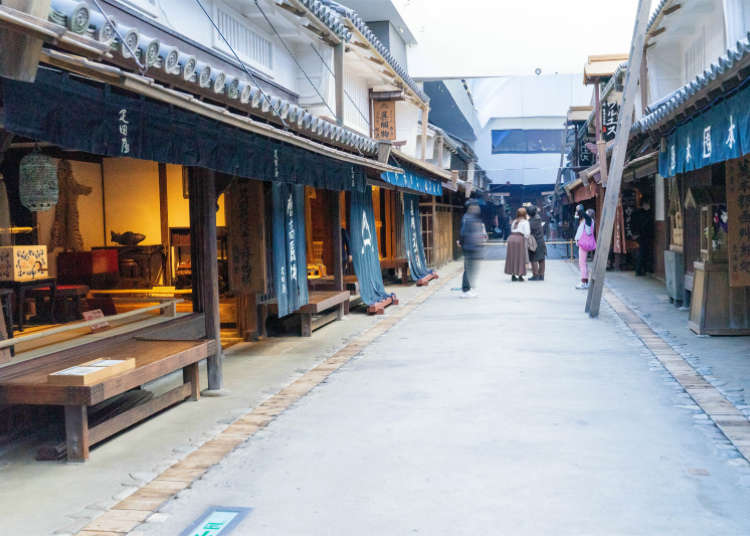
Discover Traditional Japanese Life at the Osaka Museum of Housing and Living
- Written by: WESTPLAN
Step into the past at the Osaka Museum of Housing and Living. Learn about the customs and traditions of Japanese homes and neighborhoods.
What is the Osaka Museum of Housing and Living?
The Osaka Museum of Housing and Living is a unique history museum dedicated to exploring the evolution of housing and urban culture in Osaka. Established to showcase the transformation of urban life from the Edo Period in the 1830s through the pre- and post-war eras of the 1940s, the museum provides an immersive view into the lifestyles of past residents.
Through its life-size reconstructions of homes and townhouses, complete with authentic tools and furnishings used in everyday life, the museum brings history to life.
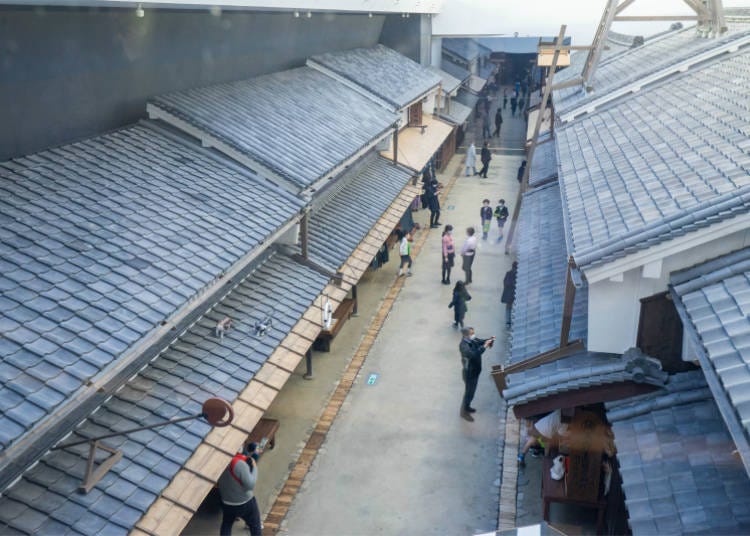
This interactive exhibition is a remarkable journey back in time, crafted to engage visitors with hands-on displays that utilize a variety of materials to recreate the historical ambiance of Osaka. Its popularity among both Japanese locals and international visitors speaks volumes about its ability to educate and entertain, making it a particularly appealing destination, especially on a rainy day in Osaka.

The permanent exhibition spans two floors. The 9th floor is a reproduction of a full-scale Edo townscape, while the 8th floor is a diorama reproduction of the streets of Osaka from the Meiji, Taisho, and Showa Periods. Each display is so realistic in their delicate, tiny details, you might find yourself lost in the past!
Getting Tickets for the Osaka Museum of Housing and Living

Admission is 600 yen for the permanent exhibit, 300 yen for the special exhibit, or 800 yen for both. Junior high students and under can enter both exhibitions for free.
Visitors may also purchase same-day tickets at the ticket office right outside the elevator. Advance tickets are also available online.
- From JR Osaka Station: Ride Loop Line (Outer Loop) from JR Osaka Station to Temma Station, and walk 650m north (approx. 10 minutes, 130 yen).
- From JR Osaka Station: Via the Osaka Metro Tanimachi Line, ride from Higashi-Umeda Station to Tenjinbashisuji 6-Chome Station, and get out from Exit 3 (approx. 5 minutes, 180 yen).
- See route on LIVE JAPAN's Route Search

One of the great perks of this place is its closeness to Osaka Station, making it an easy spot to visit when sightseeing. We recommend using the Osaka Metro route, which connects directly from the station.

Take the elevator near Exit 3 to the 8th floor. The museum entrance is right there.
Highlights of the Osaka Museum of Housing and Living
Head to 8F! Foreign Language Notation Makes it Easy for Tourists

Without further ado, let's take a tour of the Osaka Museum of Housing and Living! After getting out of the elevator on the 8th floor (8F), disinfect your hands and check your temperature as a safety measure.

The information boards throughout the museum are written in Japanese, English, Korean, and traditional and simplified Chinese, so visitors will find it easy to navigate. Those without tickets can easily buy them same-day, so don't worry about purchasing in advance!

Large suitcases and backpacks are not permitted in the exhibit space, so please use the designated lockers. There's a 100-yen deposit required, which will be returned when you retrieve your luggage.

Here are the rules regarding what visitors can bring inside. You'll be pleased to know that SLR cameras and smartphones are allowed! However, tripods, monopods, and selfie sticks are not.
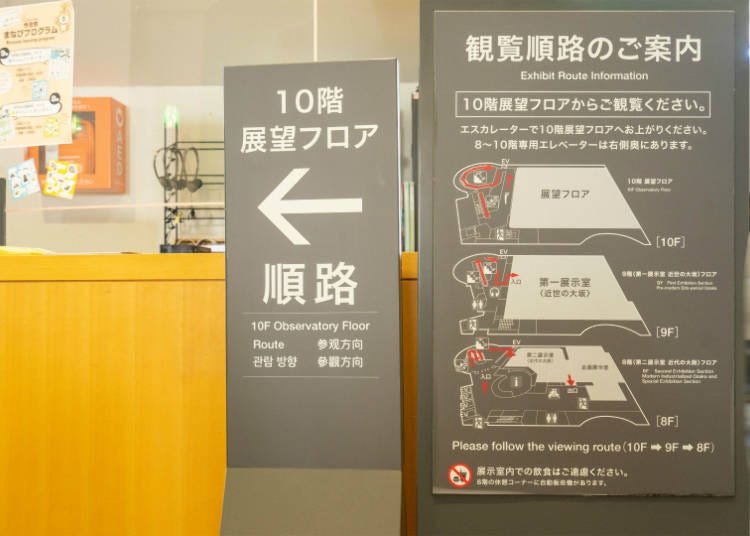
First, let's check out the observation floor on the 10th floor! Take the escalator up to 10F.

Foreign language pamphlets are available in English, Korean, Traditional Chinese, and Simplified Chinese. For more detailed information, we recommend taking one!
10F: Overlooking an Edo Period Landscape from the Observation Floor
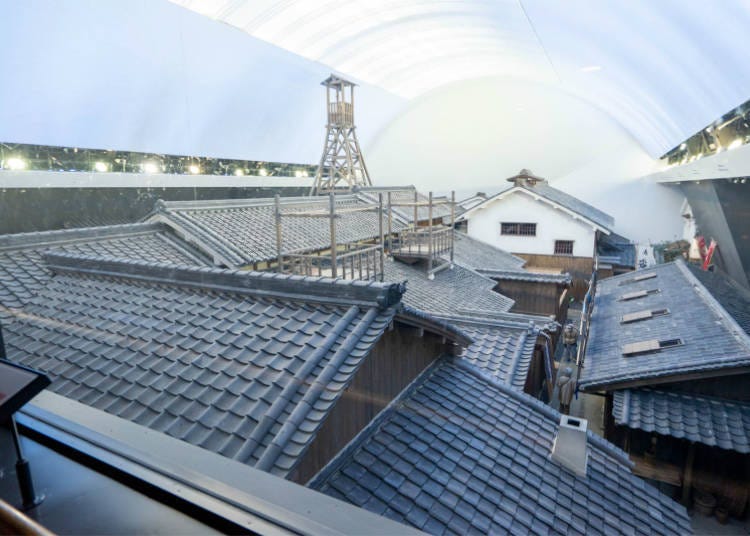
On the 10th floor, visitors will see an Edo Period cityscape through the large glass window, an impressive display of homes and merchant buildings arranged side by side! These homes had windows on the right side of the roof, which provided indoor lighting during the day.
You'll also notice a laundry-drying deck in the center of the roof of the buildings. This was an example of ingenuity people employed on the roofs of their homes, and something you'll only witness from the observation floor!

On the left side is a main street lined with merchant houses. This display boasts another impressive example of fine detail, with slight variations in tile coloring to two kittens taking a walk on the roof!
9F: Travel Back in Time to the Edo Period

Next, head one floor down, where you'll find yourself smack-dab in the middle of the Edo Period! The first exhibition room is titled "Early Modern Osaka", which offers a realistic reproduction of a cityscape from the 1830s.

We also recommend renting an audio guide (available in Japanese, English, Chinese, and Korean), which provides a more detailed explanation of the exhibits as you walk around the museum. At just 100 yen, it's a reasonable price for a thorough look at the finer details of each individual building.

The inside gives visitors a completely different perspective of the scenery with life-sized merchant houses. You just might feel as if you've really been spirited away to old Japan!

This is a daily goods shop called Komamonoya. Inside you'll see what's known as motoyui, a cord women used to tie their hair, and kamiabura, a hair oil used for style and shine. The variety of cosmetics on display gives us a clear picture of the importance of cleanliness, even back in the day.

On the other side of this noren curtain is a bookstore you can enter. The storefront is lined with books from the Edo period, new and old, as well as pictures of actors from plays!

The kimono shop welcomes customers with a wide range of products, from used kimonos to rolls of cloth.
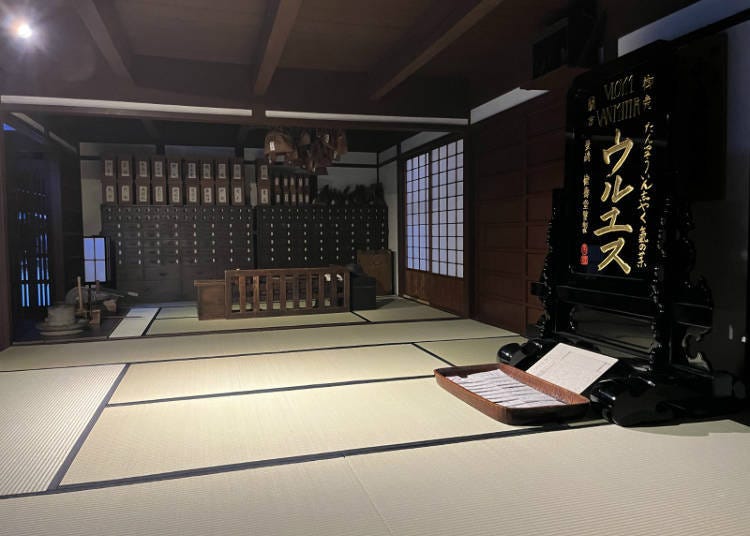
The apothecary is amongst the largest of the merchant shops. Various medicinal herbs hang from the ceiling, indicating they were mixed to make medicines here.

Upon entering the apothecary, you'll notice a large earthen floor space, which was used for cooking. A variety of cooking utensils, including a kamado (rice stove) and a seiro (food steamer) line the display. The family who lived here appears to have been quite wealthy at the time.

This is the apothecary family toilet. At the bottom right are the slippers worn only when using the toilet. The layout of the home provides easy access from directly inside the building.

The servant toilet, however, was much less convenient to use. You had to actually step outside to even get to it! There were no toilet slippers, either, and the toilets themselves were rather simple in design.

Some of the merchant houses allow visitors to take off their shoes and actually step inside! Get an up close and personal look at the furniture and other items people used back in the day.

Upon entering the alley, you'll see a nagaya (tenement house), the standard Japanese residence at the time. A nagaya was a housing complex that contained multiple dwelling units in a single building. Although these buildings shared the wall with their neighbors, entrances were separate, with direct access from the street.

Opening the doors of each unit reveals an earthen floor area that served as both an entrance and a space for cooking. Behind that is a tatami room, which also served as a living room.
It's surprising what a minimalistic floor plan people had! A space this size could house 1-3 residents at the time with this compact, space-saving layout - something almost unimaginable today!

This nagaya consists of four dwelling units, one of which is a vacant home awaiting a new tenant. The other three appear to have been inhabited by three different families, each with their own residents, occupations, and belongings, as seen from the intricate details.
Grab an audio guide, and immerse yourself in the experience by listening to real stories from that time!
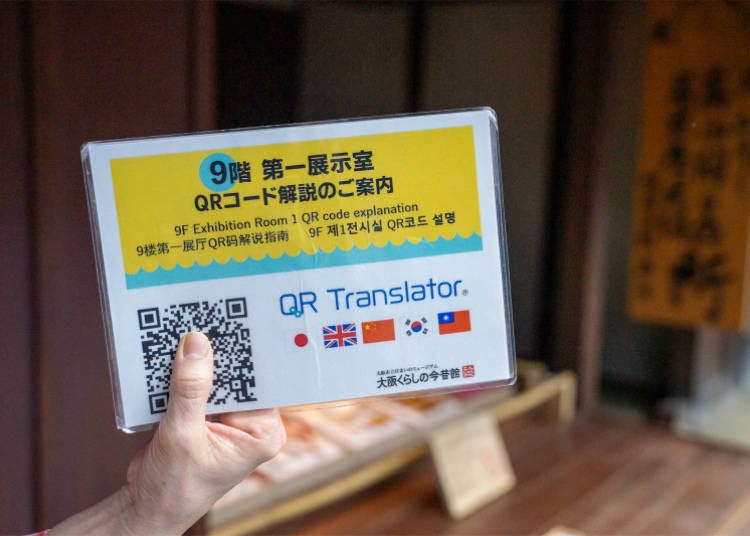
If you'd like a visual aid of the explanations, just ask one of the staff members! They'll gladly give you a QR code that lets you read along with the descriptions on your smart phone, completely free of charge!
Experience an Entire Day in Just 45 Minutes!

After strolling about, you may encounter a sudden darkness accompanied by the clap of thunder. That's because in this exhibit, you get to experience an entire day in a matter of minutes! And that change indicates that it's time to enjoy the cityscape at night. Look up toward the ceiling, where you'll now see a full moon projection surrounded by shooting stars.

In those days, things got rather dark after the sun set, so people used oil lamps for light. The dim lighting in this space makes it a perfect recreation of the living conditions of the time.

Sometimes, the only light one could rely on was the light of the moon! And the first-hand look that this realistic exhibit offers is nothing short of a unique and amazing encounter.
8F: A Diorama Display of Pre- and Post-war Living

Next, we move on to the second exhibition room, "Osaka in the Modern Age." Here, a diorama depicts Osaka from the late 19th century to the 20th century.

These modern Osaka streets are lined with two-story buildings, a stark difference from the Edo Period nagaya in the last room. The display offers an accurate representation of how people lived their lives, and one can only marvel at the detailed work that went into creating such a diorama.

Here is a view of a foreign settlement. These were built as places where foreigners could live and work, modeled after the Kawaguchi Settlement in 1884. The trees, sidewalks, and streetlights are well-maintained, and the rows of Western-style buildings hint at a sense of wealth amongst those who lived in the area.

After World War II, there also appears to have been a bath house area that used out-of-service charcoal baths as a form of aid from air raid damages.

As time progressed further, housing complexes became more prominent. Apartment complexes equipped with flushing toilets and balconies began attracting attention as a new form of housing for a new way of living.
Special Exhibitions: Periodic Special Exhibits About Daily Living

The museum also holds special exhibitions periodically throughout the year. On the day of our visit, the special exhibit was a nostalgic collection of retro home appliances. More special exhibitions are also scheduled for the future. For more details, please see their official website.
The Osaka Museum of Housing and Living gives visitors a first-hand look at how people lived in Japan in the old days, through a hands-on modern living experience previously unimaginable. Whether you have an interest in history, or simply want to experience part of Japanese culture up close, you're bound to discover something new at The Osaka Museum of Housing and Living!
The museum is located right near Osaka Station and is free for visitors with an 'Osaka Amazing Pass.' So take a break from the hustle and bustle of today, and plan a trip into the past at The Osaka Museum of Housing and Living!
Information in article as of March 2023. Please see official website for the latest updates and information.
English translation by: Krys Suzuki
-

-
Address
Residence Information Center buiding 8F, 6-4-20, Tenjinbashi, Kita-ku, Osaka-shi, Osaka, 530-0041
View Map -
Nearest Station
Tenjimbashisujirokuchome Station (Tanimachi Line / Sakaisuji Line / Hankyu-senri Line)
- Phone Number 06-6242-1170
-
Address
Residence Information Center buiding 8F, 6-4-20, Tenjinbashi, Kita-ku, Osaka-shi, Osaka, 530-0041
Kiko Matsuda, Keiko Kimura, Risa Tsushi, and a team of female writers familiar with Kansai. We love eating, drinking and traveling! We share fun information based on our experiences.
- Area
- Category
*Prices and options mentioned are subject to change.
*Unless stated otherwise, all prices include tax.
Popular Tours & Activitiess
Recommended places for you
-

Kanzenkoshitsuyakinikutabehodai Gyugyu Paradise Sannomiya
Yakiniku
Kobe, Sannomiya, Kitano
-

ISHIDAYA Hanare
Yakiniku
Kobe, Sannomiya, Kitano
-

Dotonbori
Other Sightseeing
Namba, Dotonbori, Shinsaibashi
-

Jukuseiniku-to Namamottsuarera Nikubaru Italian Nikutaria Sannomiya
Izakaya
Kobe, Sannomiya, Kitano
-

Kambei Sannomiyahonten
Yakiniku
Kobe, Sannomiya, Kitano
-
Goods

Yoshida Gennojo-Roho Kyoto Buddhist Altars
Gift Shops
Nijo Castle, Kyoto Imperial Palace
-

Everything You Need to Know About teamLab Biovortex Kyoto (2025 Insider Guide)
by: Wemmy Chau
-

Kyoto's Hidden Treasures Open This Winter! Enjoy Exclusive Access to 15 Rare Cultural Sites (Jan-Mar 2026)
by: Guest Contributor
-
Ad

Café Bahnhof in Osaka: The home-roasted coffee that captivated G20 leaders!
-

Celebrate a Dreamy Barbapapa Christmas at JR Osaka Station's Twilight
by: Guest Contributor
-

A First Look at NEMU RESORT’s 2026 Grand Renewal in Ise-Shima: A Resort Shaped by Village, Sea, and Forest
by: Guest Contributor
-

New Way to Reach Koyasan! Ride Nankai's 'GRAN Tenku' for a Heavenly Journey
by: Guest Contributor
Inspiration for Accommodations
-

Spacious Family Hotel in Namba: 20 Comfortable Stays for Family Fun
-

Charming Hotels to Enjoy the Spectacular Views of Arashiyama's Autumn Leaves from Your Room
-

Experience Stunning Views of Osaka Castle from Private Spaces: Top Hotels Near Osaka Castle
-

Recommended by Visitors! Arashiyama's Best-Rated Hotels
-

Family-Friendly Universal Studios Japan Hotel with Excellent Access
-

Enjoy a Comfortable Stay in Osaka! 10 Hotels with Convenient Airport Shuttle Services
-

Top 10 Recommended Hotels Near Namba Station with Great Access
-

Enjoy Night Views from Your Room! Recommended Hotels in Namba Area
-

10 Best Hotels Near Kyoto Station: Budget-friendly, Perfect for Kyoto Sightseeing
-

Complete Guide to Buying Japanese Medicine in Japan: Phrases and Vocabulary You Need to Know
-

Kiku-Masamune Sake Brewery Museum: See How Some of Japan's Best Sake is Made
-

Autumn in Japan 2025: Fall Foliage Forecast & Where to Enjoy the Colorful Leaves (+Tour Info)
-

Hoshinoya Kyoto: This Incredible Japanese Hotel Welcomes You By Boat on a Sakura-Filled River
-

Visiting Tsutenkaku Tower: Osaka's Retro Icon in the Heart of Shinsekai
by: Guest Contributor
- #best gourmet Osaka
- #things to do Osaka
- #what to do in kyoto
- #what to bring to japan
- #best gourmet Kyoto
- #new years in Osaka
- #what to buy in nanba
- #Visiting Osaka
- #onsen tattoo friendly arima
- #daiso
- #Visiting Kyoto
- #best japanese soft drinks
- #japanese fashion culture
- #japanese convenience store snacks
- #japanese nail trends

















